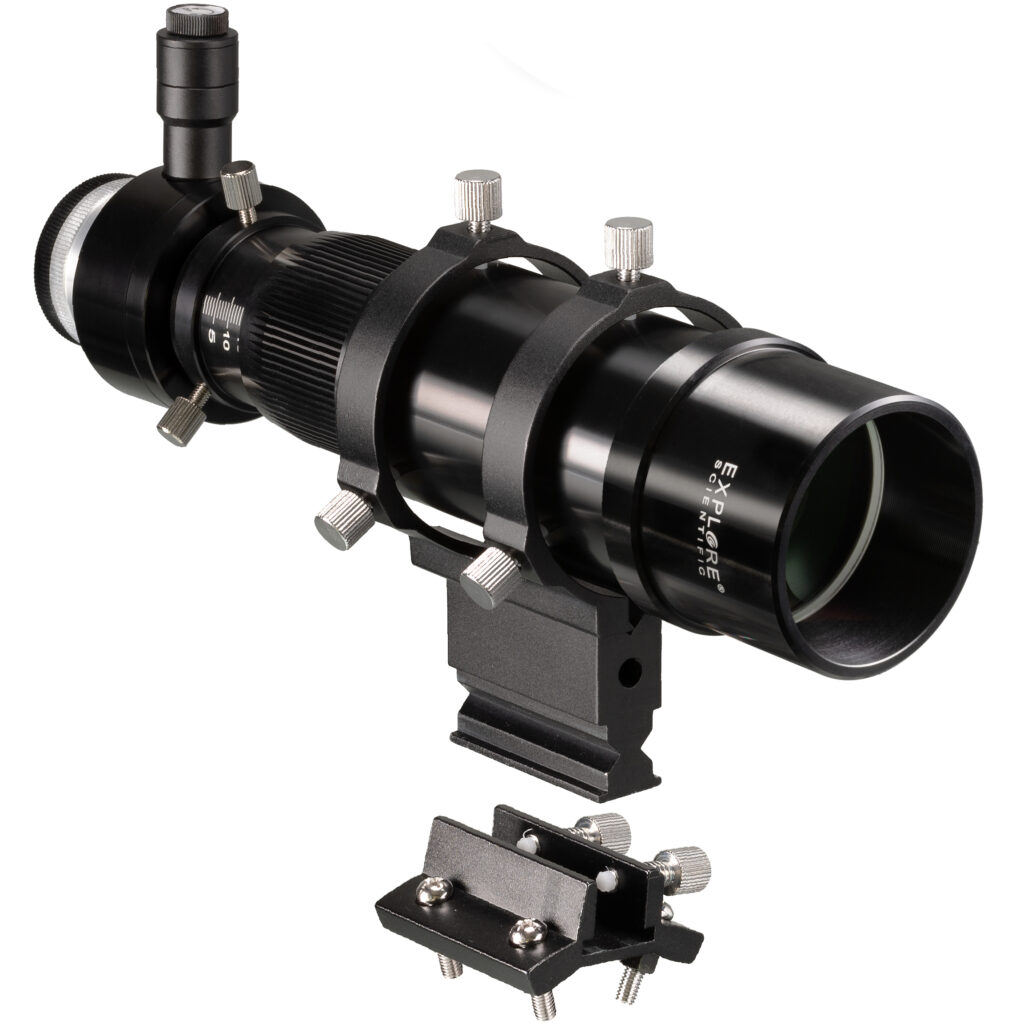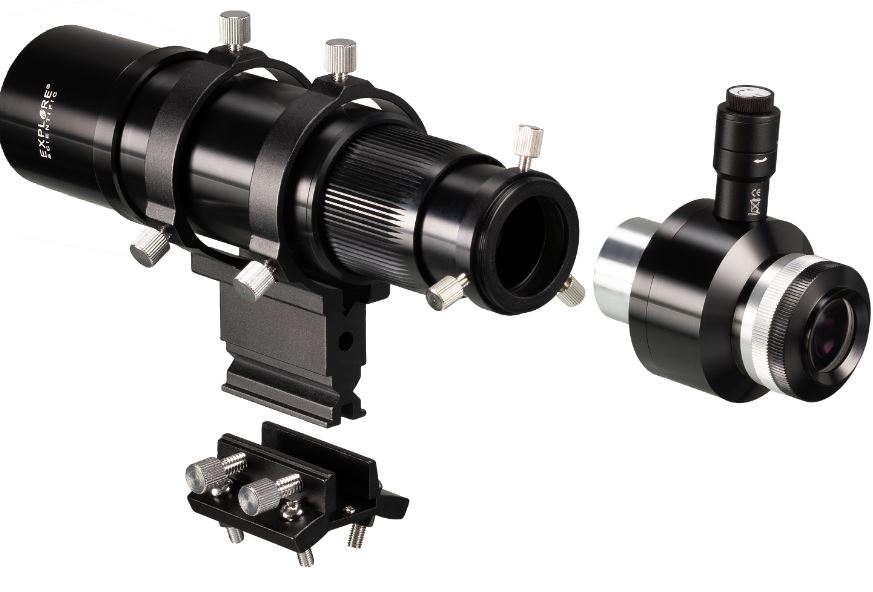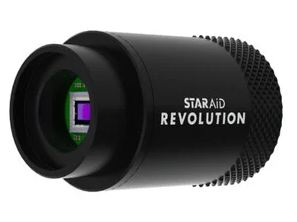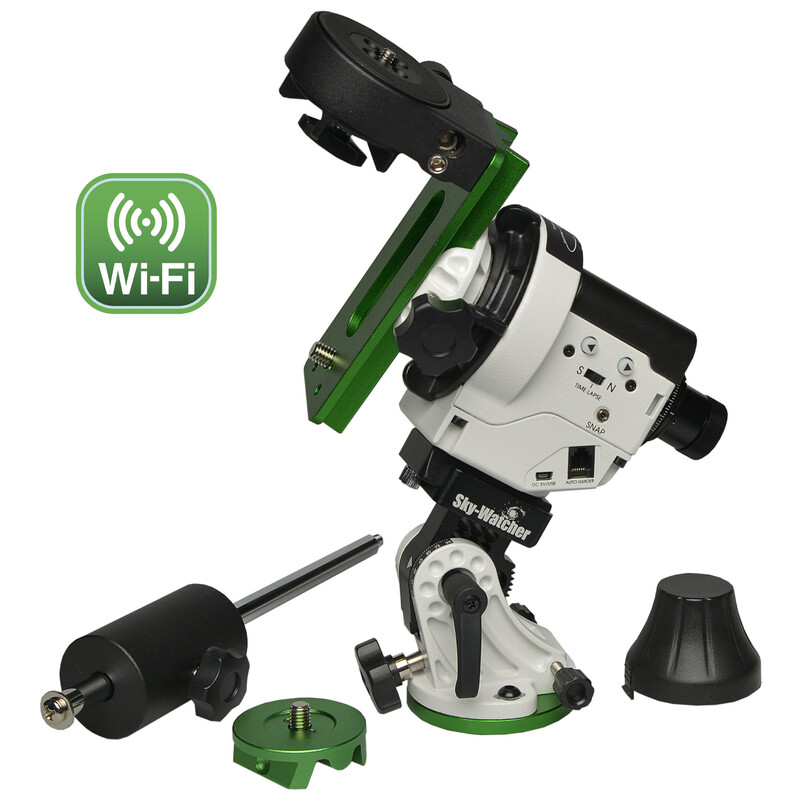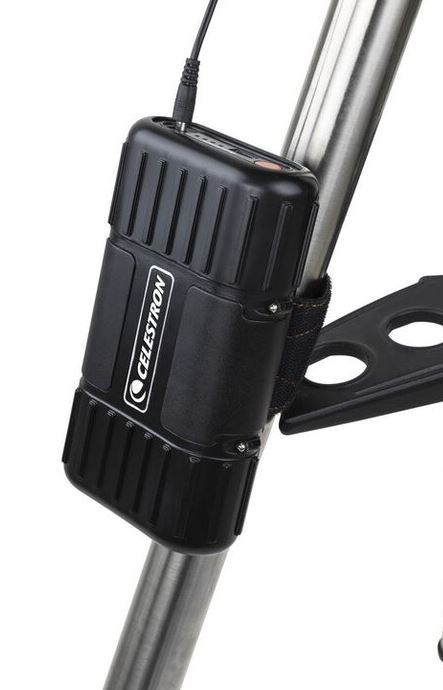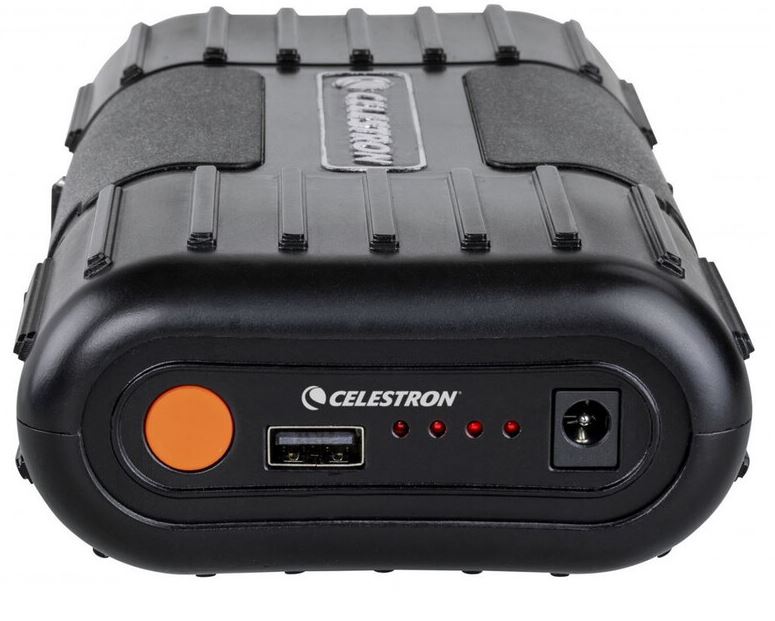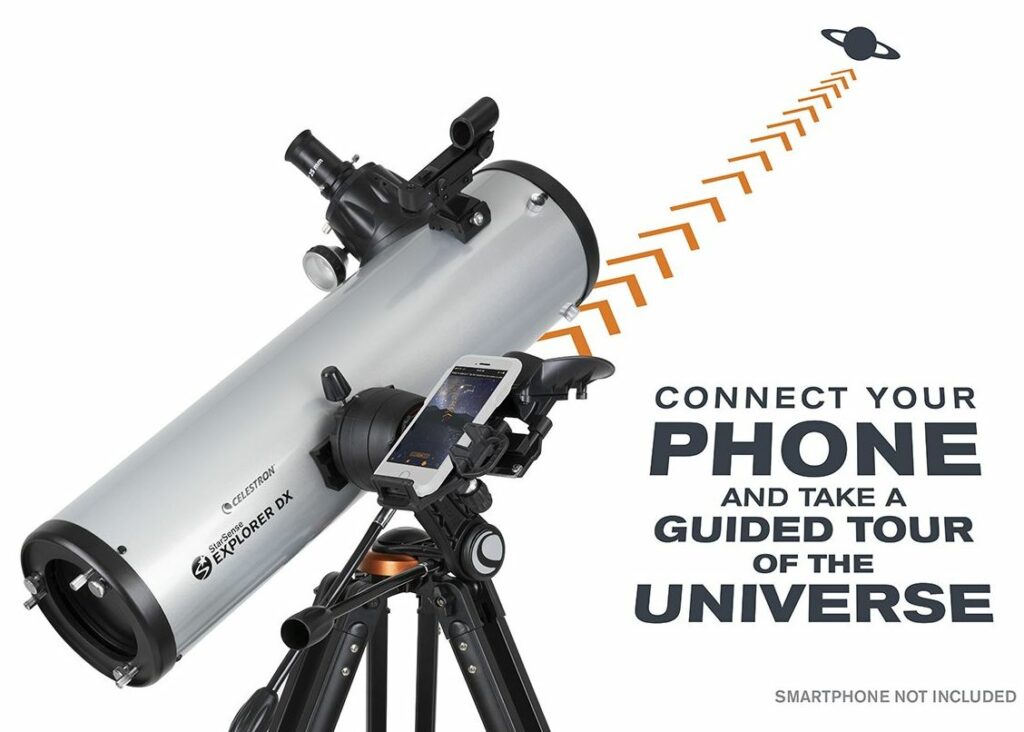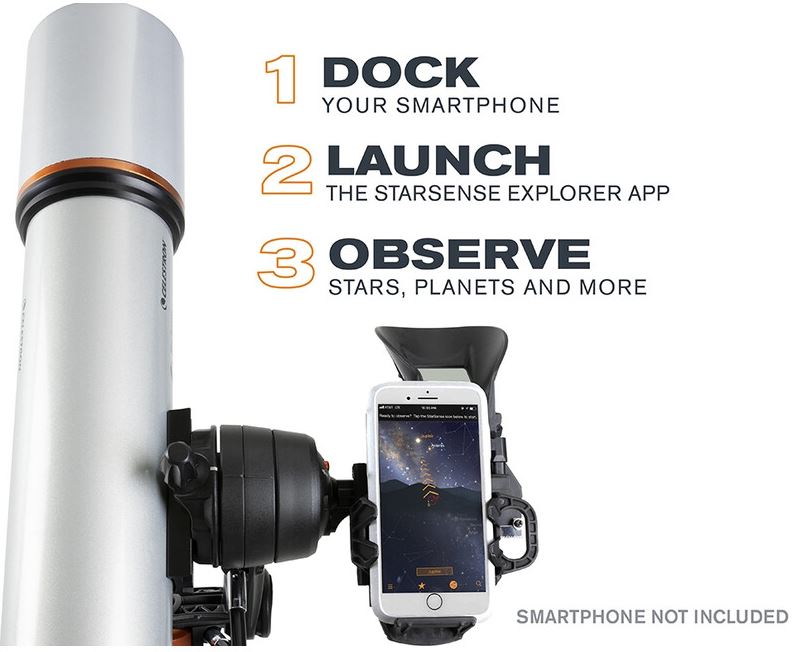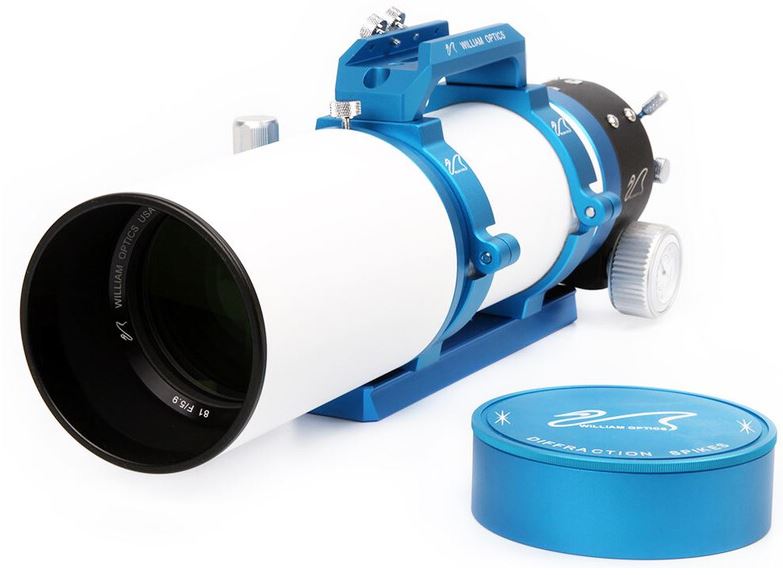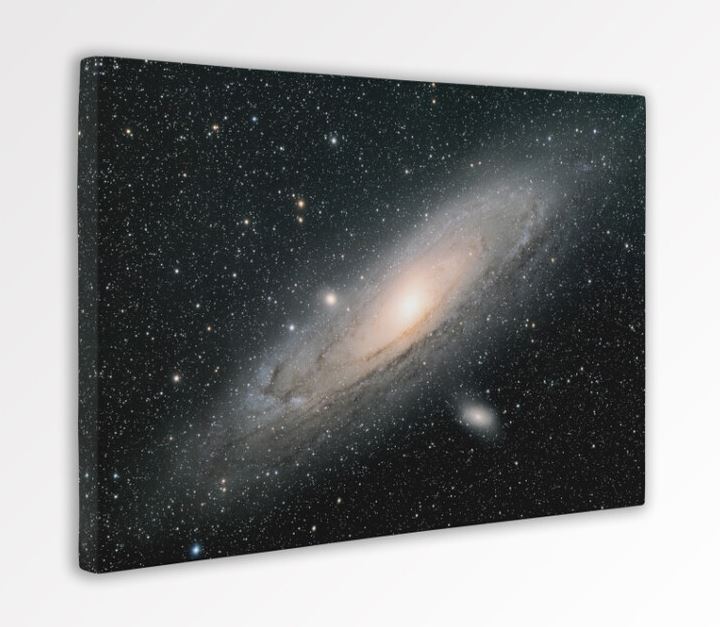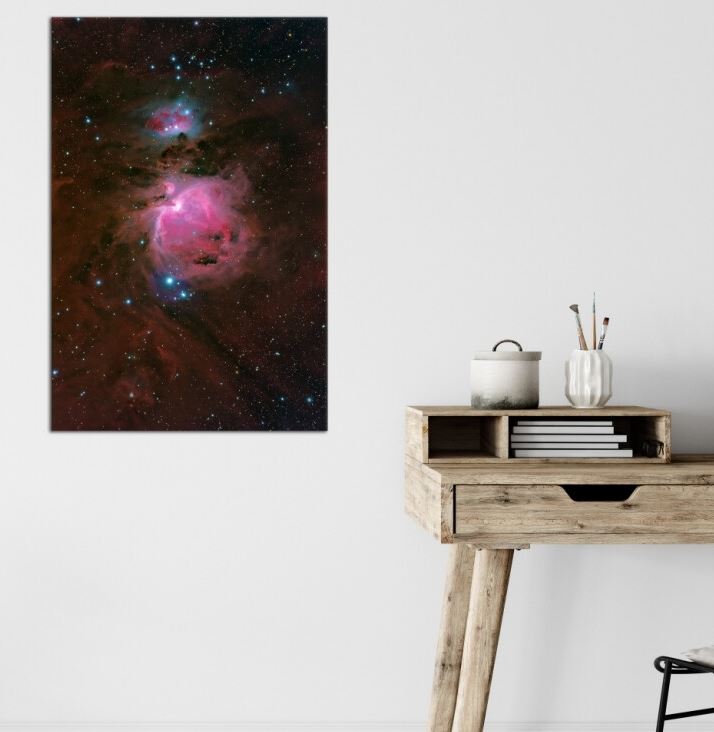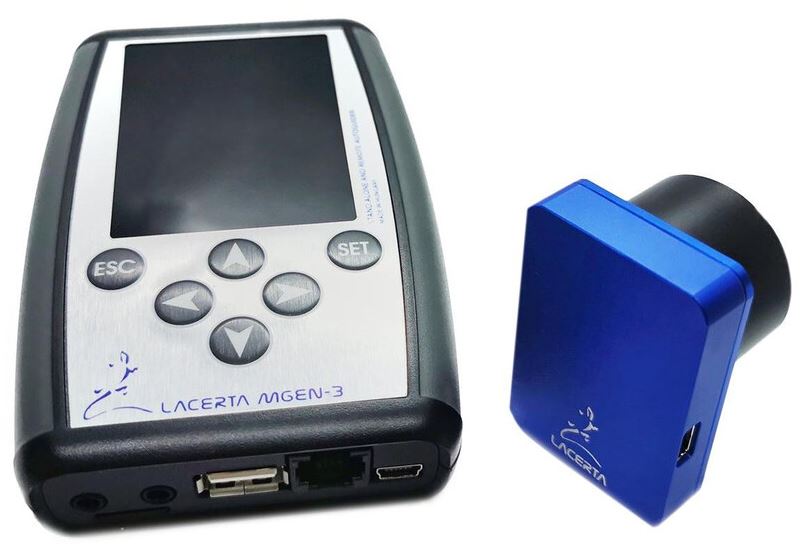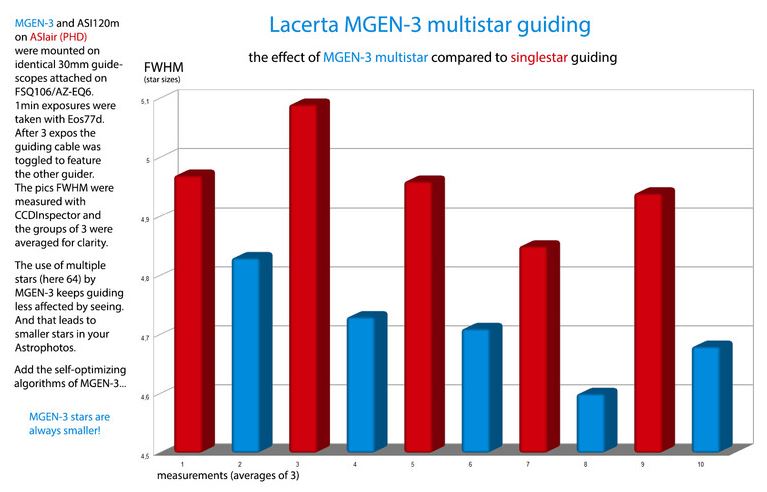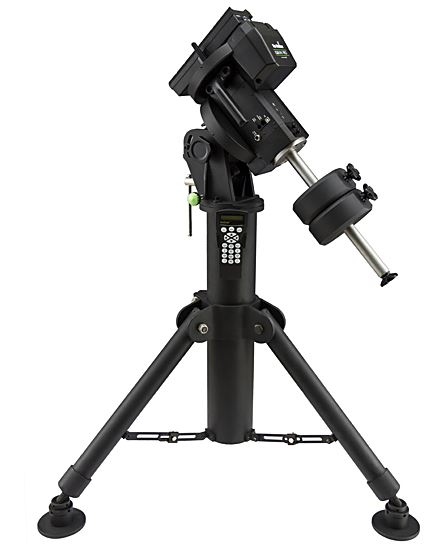Small telescopes which are mounted parallel to the telescope fulfil two purposes: as a finderscope, they help the observer to navigate the night sky, whilst as a guidescope, they help with the astronomical mount’s precise tracking.
The manufacturer, Explore Scientific, has produced two models which superbly meet the requirements for both of these:
- Explore Scientific 8×50 helical guidescope T2/ 1.25″
- Explore Scientific 10×60 helical guidescope T2/ 1.25″
Both scopes are equipped with a removable eyepiece. Without this eyepiece, they can be used as a guidescope with a helical focuser. They use a guiding camera with a mating dimension of 1.25”. With the aid of the guide sleeve clips, the guidescope can be aligned to a guide star. The camera keeps this firmly in view and corrects minute mount errors using drive pulses.
Using the eyepiece, small telescopes are converted into high-quality finderscopes, producing images vastly superior to standard finderscopes. The eyepiece is fitted with an illuminated crosshair.
Thanks to this practical solution provided by Explore Scientific an auxiliary telescope is only required for different applications.

